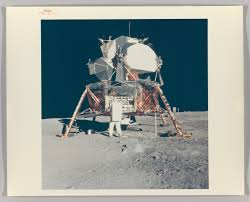Apollo 11
Overview
Apollo 11 was the first spaceflight to successfully land humans on the Moon. Launched by the United States' NASA on **July 16, 1969**, it fulfilled President John F. Kennedy’s 1961 goal of “landing a man on the Moon and returning him safely to the Earth” before the end of the decade.
The mission marked a defining moment in the Space Race and remains one of humanity's most significant scientific and technological achievements.
Crew
- **Neil Armstrong** – Commander
- **Buzz Aldrin** – Lunar Module Pilot
- **Michael Collins** – Command Module Pilot
Armstrong and Aldrin became the first and second humans, respectively, to walk on the Moon, while Collins remained in orbit aboard the Command Module Columbia.
Key Events
- **Launch:** July 16, 1969, from Kennedy Space Center, Florida.
- **Lunar landing:** July 20, 1969 – Lunar Module Eagle touched down on the Moon’s surface.
- **Famous quote:** Armstrong said, "That's one small step for [a] man, one giant leap for mankind."
- **Return to Earth:** July 24, 1969 – Splashdown in the Pacific Ocean.
Lunar Module: Eagle
The Lunar Module Eagle separated from the Command Module and descended to the surface of the Moon. Armstrong manually piloted it to a safe landing site in the **Sea of Tranquility**.
Moonwalk
The first **Extravehicular Activity (EVA)** lasted about 2.5 hours. Armstrong and Aldrin collected **moon rock samples**, deployed scientific instruments, and planted the American flag.
Impact and Legacy
Apollo 11 was a unifying global moment and showcased the potential of human ingenuity and exploration. It was televised worldwide and watched by over 600 million people. The mission remains a symbol of ambition and exploration and inspired future lunar and planetary missions.
Artifacts and Preservation
Artifacts from Apollo 11, including suits, tools, and rock samples, are preserved at the **Smithsonian National Air and Space Museum** and other institutions.
